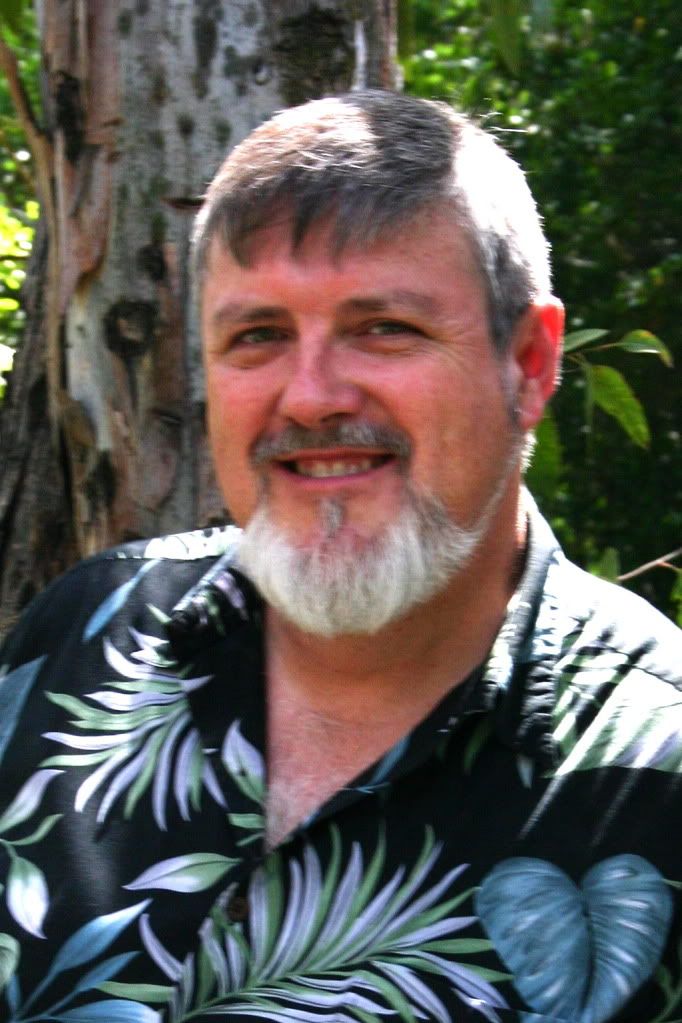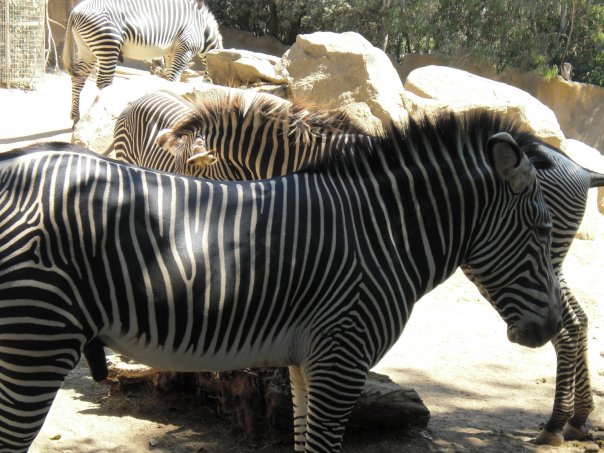As most of you know, I took a 4-day play weekend to celebrate my birthday a couple weeks ago. Ellen and I hopped on a plane to San Diego to take in their famous Balboa Park. Most people know of the fabulous San Diego Zoo inside the park. What most people don’t know it that there are 15 different museums in the park as well. I have wanted to cruise these museums for many years and decided now was the time. I enjoy learning and experiencing new things. I highly recommend life-long learning, as it is one of the best ways to keep your mind and brain young. Old brains get crotchety and grumpy while young brains retain the capacity for joy and fulfillment.
We decided to skip the usual rental car game and instead stayed at a place just 4 bus stops from the park. The place we stayed in had a small kitchen so we didn’t need to hoof it all over town looking for places to eat. We picked up some eggs, beans, tortillas, and what not at a little market a few blocks away and we were set. We decided that we would splurge on one really nice dinner at an upscale restaurant (El Prado) in Balboa Park. After our first full day walking the fine art museum, listening to an outdoor organ concert, checking out the international cottages, cruising the Aerospace Museum, and taking in an IMAX film, we ended with the fabulous dinner at The Prado. The next day was devoted entirely to the San Diego Zoo, and the last day to the Cactus Garden, Science Center, Natural History museum, Botanical Building, and Japanese Tea Garden. Although we hit the highlights, we could have spent another couple of days in some of the smaller museums.
Or check them out on my new Facebook page Here.
It is important to break out of our usual routine and do something completely different now and then. Our brains thrive on variety to remain flexible and alive. What is the point of being healthy, if your brain is too far gone to be able to enjoy life? Is there really a payoff to being a healthy but crotchety, unhappy person? Learning how to enjoy yourself is a life-long process. It is not something you can wait until you retire to start to figure out. You lose 10,000 to 50,000 brain cells every day of your life. If you don’t build the flexible pathways for joy and happiness now, tomorrow the brain cells you need to build with may be gone.
Want to know how well your brain is doing? Is it functioning properly, or are you losing the capacity for happiness? The Neurotransmitter Assessment section of the Super Health Questionnaire will tell you. If you have both circles checked for more than 2 questions in any sub-section or several single circles checked in any sub-section then you have a problem that needs to be addressed. Copy the test and bring your results into your next appointment if a problem shows up. Go to the Super Health Questionnaire Here.
Good Journey,
David
David

Get Your Health Action Plan Outline Here CLICK HERE
Health Challenge #18
Move it or lose it
We have focused a lot on healthy eating in these health challenges to date. Just as important as eating is your ability to get that healthy nutrition to the cells that need it. That means circulation. Your body is the ultimate energy efficiency machine. Any part of your body that you are not using regularly, your body will tear down and use the components somewhere else. This conserves energy and resources. Unfortunately this applies really strongly to muscles and blood vessels. Just two weeks lying in bed will cost you half of your muscle tone – tone that will not come back unless you force it to do so. The blood vessels that bring nutrition to your body cells also come and go depending on need.
We have focused a lot on healthy eating in these health challenges to date. Just as important as eating is your ability to get that healthy nutrition to the cells that need it. That means circulation. Your body is the ultimate energy efficiency machine. Any part of your body that you are not using regularly, your body will tear down and use the components somewhere else. This conserves energy and resources. Unfortunately this applies really strongly to muscles and blood vessels. Just two weeks lying in bed will cost you half of your muscle tone – tone that will not come back unless you force it to do so. The blood vessels that bring nutrition to your body cells also come and go depending on need.
The real purpose of healthy eating is so that you feel good and are able to do what you want and need to do to live life fully. Because of this energy efficiency in your body, your body will only provide you with the minimum necessary tone and circulation to get you through your average day. The extra strength, tone, and oxygen carrying circulation you need to be able to play on the weekend won’t be there if you don’t tell the body you need that extra on a more regular basis than 1 day on the weekend.
Movement is also necessary to flush the toxic waste byproducts of normal cell functioning out of the tissues to be processed. This makes good circulation critical so that our own bodily wastes do not poison us. To feel healthy we need our basic tone, strength, and circulation to be operating at a level much higher than the bare minimum necessary for just surviving. Because of the “minimum necessary” rule in the body, to feel healthy we have to regularly push the body’s needs to much higher levels than our usual and customary to establish a high enough minimum that we can feel energized and healthy all the time.
What does that mean? It means exercising each part of your body you want to feel good to its limits every 3 to 4 days. If you want to be able to breathe as you get older you need to push you breathing capacity to its limits twice a week. Breathing capacity is one of the strongest predictors of long you will live. If you want to be able to walk as you age you need to push your lower body muscles to the limit twice a week. Body movement is one of the strongest workouts available for your brain as well. It takes a lot of brainpower to coordinate body activity.
So am I saying you need to be a super jock with memberships to 3 different gyms to be healthy? No. Everything you need you already have in your home right now. All you need is a few feet of floor space, your body, and gravity. Do you need hours and hours of time? No. An hour a week will cover the high intensity basics. With more time you expand your capabilities, but an intense hour a week is the minimum. Building endurance adds an extra 30 to 60 minutes a day of an activity like walking. Sorry, but this is minimum required maintenance for living in a human body. Eat right and move it – or lose it.
The science is in and long hours of aerobic workouts are not good for you. Unless you are getting paid to do it, don’t go there. Long aerobic workouts actually make your heart weaker, damage your blood vessels, and encourage your body to store more fat to use as energy during the long workouts. (You burn up all your stored sugar in the first 10 to 15 minutes – when you tell your body you are going to need fat to burn on a regular basis, it will store more fat.)
The best way to maintain your body in a healthy, ready to serve you manner is with something called interval training and maximum burst weight training. This advice is for regular folks, not for the specific needs of various sports or heavy labor professions.
Be sure to stretch out your muscles before engaging your interval training to prevent injuries.
With interval training the goal is to move your body as fast as you can for 15 to 60 seconds then rest for 1 to 2 minutes, and repeat this cycle 3 to 6 times. The entire workout will generally take 10 to 15 minutes. The objective is to get your heart rate pumped up in short spurts until it reaches maximum functional capacity. Functional capacity in this case means that your heart rate stays elevated for the 60 seconds right after you stop your activity burst. If your heart is able to recover and your heart rate drops by 10 to 20 beats after 60 seconds then your body is ready for another interval of rapid movement.
How high do you want your heart rate to go? Count your number of heartbeats for 15 seconds immediately after stopping the intense phase, then again for 15 seconds one minute later. The commonly accepted 15 second level is based on your age – age 30 would be 38 to 43, age 40 would be 36 to 40, age 50 would be 33 to 38, age 60 would be 32 to 36, and age 70 would be 30 to 33. After 1 minute recheck your heart rate. If it drops by 3 to 5 beats then go another round of rapid exercise and retest.
Generally you will reach a point with your training sessions where your heart rate does not drop down within 3 to 5 cycles of exercise and rest. If not then it is time to increase the number of seconds you do your rapid exercise. Start at only 15 seconds of rapid movement and 1 to 2 minutes of slow movement while you check your heart rate. As your conditioning improves you will gradually increase your rapid exercise interval to 60 seconds. This is much easier to do on fancy gym equipment that has sensors that measure your heart rate as you are working out. In the gym the treadmill, stationary bikes, stair steppers, and my personal favorite the elliptical machines all work well for interval training.
After you have gone to all the effort of checking your heart rate a few times you will probably be able to tell how hard you have worked out and whether you have recovered enough to go another round just by how hard you are breathing. The whole idea is to get you breathing hard to expand your lung capacity. The simple version of all that stuff above is to do an aerobic movement – as fast as you can – for 15 to 60 seconds, and then spend 2 minutes catching your breath. If you can’t catch your breath within 2 minutes then you are done.
At home simply running in place as fast as you can is a simple choice – even better if done on a mini-trampoline. Another excellent exercise is the Hindu Squat. Here is a video to demonstrate how this is done.
If you are starting from a debilitated condition, then just practice getting up and down from a sitting position from a chair as rapidly as you can. You can create positive movement to improve your health no matter what your current condition.
Next time I will discuss strength training to build and keep your muscles toned and strong.
